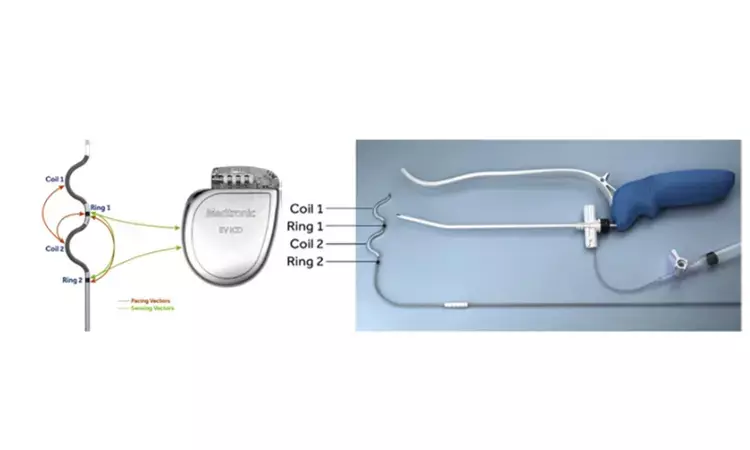- Home
- Medical news & Guidelines
- Anesthesiology
- Cardiology and CTVS
- Critical Care
- Dentistry
- Dermatology
- Diabetes and Endocrinology
- ENT
- Gastroenterology
- Medicine
- Nephrology
- Neurology
- Obstretics-Gynaecology
- Oncology
- Ophthalmology
- Orthopaedics
- Pediatrics-Neonatology
- Psychiatry
- Pulmonology
- Radiology
- Surgery
- Urology
- Laboratory Medicine
- Diet
- Nursing
- Paramedical
- Physiotherapy
- Health news
- Fact Check
- Bone Health Fact Check
- Brain Health Fact Check
- Cancer Related Fact Check
- Child Care Fact Check
- Dental and oral health fact check
- Diabetes and metabolic health fact check
- Diet and Nutrition Fact Check
- Eye and ENT Care Fact Check
- Fitness fact check
- Gut health fact check
- Heart health fact check
- Kidney health fact check
- Medical education fact check
- Men's health fact check
- Respiratory fact check
- Skin and hair care fact check
- Vaccine and Immunization fact check
- Women's health fact check
- AYUSH
- State News
- Andaman and Nicobar Islands
- Andhra Pradesh
- Arunachal Pradesh
- Assam
- Bihar
- Chandigarh
- Chattisgarh
- Dadra and Nagar Haveli
- Daman and Diu
- Delhi
- Goa
- Gujarat
- Haryana
- Himachal Pradesh
- Jammu & Kashmir
- Jharkhand
- Karnataka
- Kerala
- Ladakh
- Lakshadweep
- Madhya Pradesh
- Maharashtra
- Manipur
- Meghalaya
- Mizoram
- Nagaland
- Odisha
- Puducherry
- Punjab
- Rajasthan
- Sikkim
- Tamil Nadu
- Telangana
- Tripura
- Uttar Pradesh
- Uttrakhand
- West Bengal
- Medical Education
- Industry
Evolutionary Jump In ICD Technology: Is Sub-Sternal ICD The New Star On Horizon?

EV ICD device from Medtronics
The extravascular (EV) ICD system with novel lead placement in the substernal space provides defibrillation as well as pacing therapies like anti-tachycardia pacing (ATP) for patients. The first-in-human experience about the feasibility and adverse effect profile of this device was published in a study by Crozier et al. in JACC: CLINICAL ELECTROPHYSIOLOGY VOL.6 in November 2020 has shown brilliant results for its efficacy and safety.
Implantable cardioverter-defibrillators (ICDs) have an evolutionary history of around 30 years. Engineering advancements have shown the way forward from the conventional transvenous ICDs to subcutaneous (SQ) devices that overcome major limitations of transvenous systems like lead failure, vascular obstruction, systemic infections, etc. However, SQ devices have their own drawbacks like lack of anti-tachycardia pacing and sustainable pacing support.
The concept of implanting device leads in substernal space has the theoretical benefit of satisfactory sensing and pacing and lower defibrillation threshold than previous SQ systems. In this regard, a study published by Crozier et al. in JACC: clinical electrophysiology, has shown the first-in-human evaluation of a substernal extravascular (EV) ICD which has shown the feasibility of substernal lead placement, defibrillation, and pacing with a chronically implanted system.
In their prospective, nonrandomized, chronic pilot study conducted at 4 centers in Australia and New Zealand, 21 patients referred for ICD implantation received EV ICD systems. Investigators found that among 20 patients who underwent successful implantation, the median defibrillation threshold was 15J, and 90% passed defibrillation testing with a ≥10-J safety margin. This is at par with contemporary transvenous ICD systems. Mean R-wave amplitude was 3.4 ± 2.0 mV, mean ventricular fibrillation amplitude was 2.8±1.7 mV, and the pacing was successful in 95% at ≤10 V. There were no intraprocedural complications. Two patients also underwent elective chronic system removal since hospital discharge. In the 15 patients presently implanted, the systems are stable in long-term follow-up.
This the study concludes that the future novel EV ICD platform may enable physicians to provide bradycardia and ATP options and to defibrillate the heart with energy levels similar to those of current transvenous ICD platforms. On the basis of this favorable experience, a worldwide pivotal study has already begun, with results forthcoming.
The complete article can be viewed from https://www.jacc.org/doi/full/10.1016/j.jacep.2020.05.029.
(1)1. Crozier I, Haqqani H, Kotschet E, Shaw D, Prabhu A, Roubos N, et al. First-in-Human Chronic Implant Experience of the Substernal Extravascular Implantable Cardioverter-Defibrillator. JACC Clin Electrophysiol. 2020 Nov 1;6(12):1525–36.
MBBS, MD , DM Cardiology
Dr Abhimanyu Uppal completed his M. B. B. S and M. D. in internal medicine from the SMS Medical College in Jaipur. He got selected for D. M. Cardiology course in the prestigious G. B. Pant Institute, New Delhi in 2017. After completing his D. M. Degree he continues to work as Post DM senior resident in G. B. pant hospital. He is actively involved in various research activities of the department and has assisted and performed a multitude of cardiac procedures under the guidance of esteemed faculty of this Institute. He can be contacted at editorial@medicaldialogues.in.
Dr Kamal Kant Kohli-MBBS, DTCD- a chest specialist with more than 30 years of practice and a flair for writing clinical articles, Dr Kamal Kant Kohli joined Medical Dialogues as a Chief Editor of Medical News. Besides writing articles, as an editor, he proofreads and verifies all the medical content published on Medical Dialogues including those coming from journals, studies,medical conferences,guidelines etc. Email: drkohli@medicaldialogues.in. Contact no. 011-43720751


